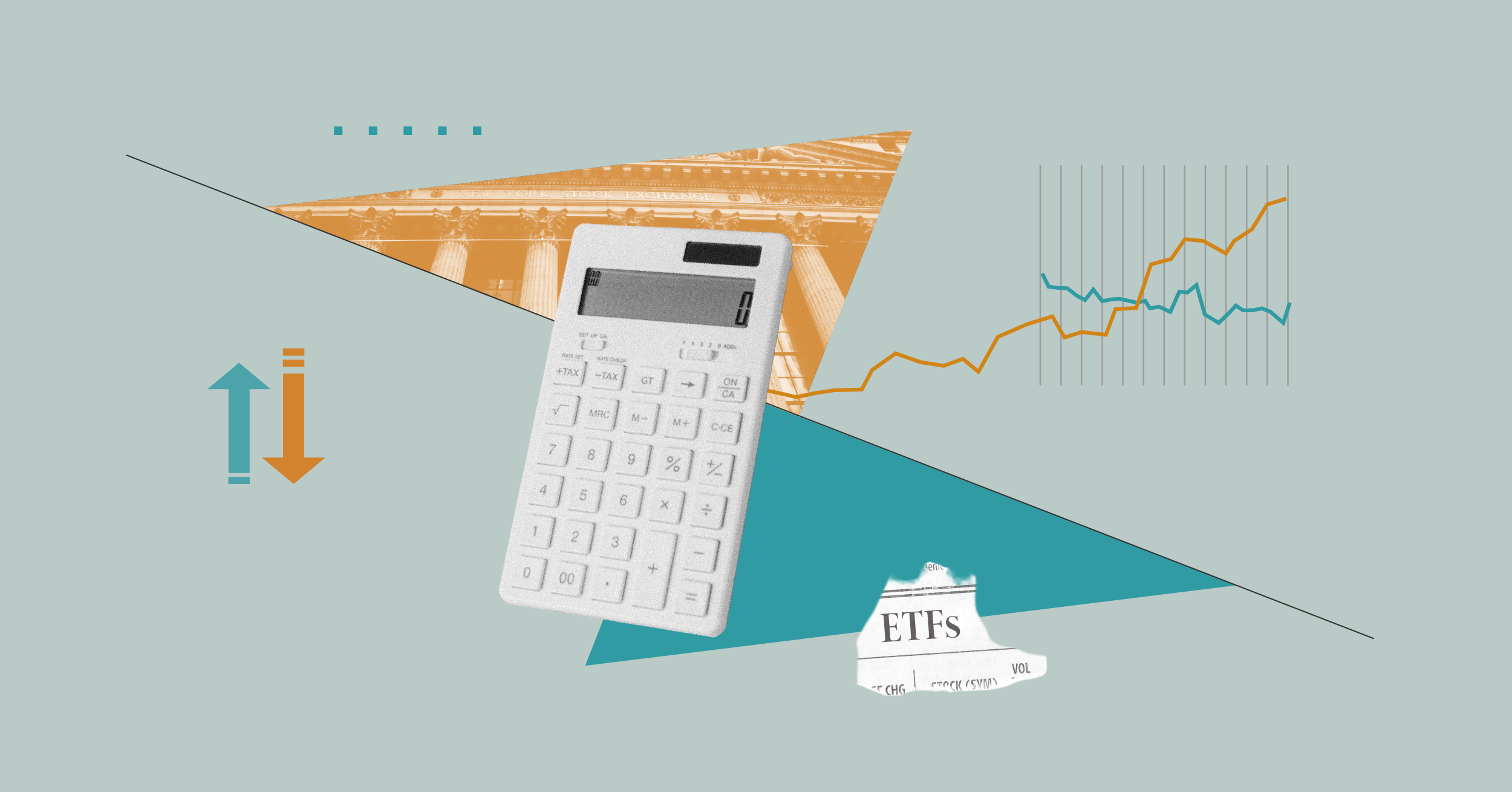Paul Kaplan: I'm Paul Kaplan, Director of Research at Morningstar Canada. I'm pleased today to have a conversation with Larry Siegel on several topics of importance to investors. Larry is a leading thinker and prolific author on investment topics. In the late 1980s and early 1990s, Larry and I worked together at a small consulting firm called Ibbotson Associates, which Morningstar acquired in 2006, and I have been friends with him ever since. After his time at Ibbotson, Larry served as the Director of Investment Research at The Ford Foundation. Since then, he has been the Gary P. Brinson Director of Research for the CFA Institute Research Foundation. Recently, Larry and a co-author published an article in the 30th anniversary issue of the Journal of Investing titled "Debunking Seven and a Half Myths of Investing". I'm going to bring up some of the myths discussed in this article, but I'm also going to raise some related questions not addressed in it. Larry, thanks for joining me today for this conversation.
Laurence Siegel: You're very welcome.
Kaplan: Let's start with the myth that there is so much passive indexing that the market must be getting more inefficient because there is not enough money actively managed by people analyzing individual securities. Where did this myth come from, and how prevalent is it?
Siegel: I suspect it came from active managers. They're losing market share and revenues to index funds, and they have a motive to say that active management is necessary and possibly better. But there is some logic, some theory behind the comment. If you want to think about a difficult issue, it's helpful to start with a polar case, an extreme case. If no one analyzed securities at all, markets would be hopelessly inefficient, and the active management would be very fruitful.
Le's say now that only one person starts to analyze securities and that person only has $1 million. Well, that doesn't change anything. So, there has to be a substantial amount of money at work in active management in order for the market to be efficient enough to function. Now, I don't think there is any evidence that the market has become inefficient due to people dropping out of active management and using index funds because it's just as hard to make money as it ever was, and if the markets were really inefficient, that would not be the case.
Kaplan: How about the myth that we are in a new era of technological change at breakneck speed, where growth outperforms value permanently, or at least as far as the eye can see. Larry, you and I have been discussing value and growth investing since our days at Ibbotson. While this myth says that growth will permanently outperform value, our opinion was that value should outperform growth over the long run. This view was based on many academic studies going back to the late 1970s. However, in the article you wrote that there cannot be a preferred return for one asset over another in the very long run other than as a compensation for risk. This was the position of Fama and French prior to their 2007 paper "Disagreements, Tastes and Asset Prices", in which they informally argued that non-pecuniary investment preferences, tastes impact asset prices and returns.
Roger Ibbotson, Tom Idzorek, James Xiong and I formalized this idea with the Popularity Asset Pricing Model, PAPM, in a 2018 CFA Institute research monograph "Popularity: A Bridge between Classical and Behavioral Finance", which you solicited in your role as that organization's Director of Research. In that book, we argue that the PAPM explains the long run value premium and growth discount. You wrote the foreword to this monograph, which begins "Why does value investing work?" Do you still believe that value investing works? If so, do you believe that the PAPM explains why? Or have you changed your view? And if so, why?
Siegel: I believe that if there is a preferred return to value over the long run because growth stocks provide a non-pecuniary benefit, the PAPM is then correct. But I don't think it can be very large. I just can't imagine a universe of more or less rational people where investors make large financial sacrifices year after year to hold stocks that feel good or that are fun to talk about at a cocktail party. They might make small sacrifices. And if they do, there could be a small premium for value over growth on average over the long run.
Now, I would like to point out the history of this. All of the historical excess return of value over growth using the Fama French indices was earned before the value effect was discovered by Marc Reinganum and Ralph Bonds around 40 years ago. After that, it became a zero premium with a lot of volatility. If you look at the chart drawn by Rajnish Mehra of growth versus value, you can see that value outperformed growth by a very large margin over the whole period of 1927 to 2020. But if you only look at the period – this is the panel on the right – when the value effect was known and people could invest using that information, the value effect basically went away and what you got was random variation in long cycles between growth periods and value periods. So, my concern about the assumption of a value premium is that it's been arbitraged away.
Now, I've jokingly called this Siegel's law that once an effect is discovered, it goes away, but obviously, it's not mine. I'm just joking. The caution, though, is that what appears to be a preferred return is likely to go away after it's been discovered and widely utilized.
Kaplan: Let's go to another myth. Big data and artificial intelligence, machine learning are the next big thing in active management. Why is this a myth?
Siegel: Well, big data and artificial intelligence are controversial terms. Everybody uses them, but it turns out that machine learning – I'm going to drop artificial intelligence for a second and then come back to it – machine learning is statistics as interpreted by Thomas Bayes in the 1700s and improved on by William Gossett in the 1800s and then in the 20th century, statistics really came into its own as a science. What we call machine learning and to some extent AI looks qualitatively different from ordinary statistical inference because we have so much data, big data, because we have very fast computers, which we have not had until recently, and because we have very clever programmers who know how to make statistical inference look like the machine is doing something "intelligent". People have always done this using various aids. And computers came into the investment business probably 40 to 50 years ago. And now, they are so fast and have so much data that it gives the illusion of intelligence. This is just the intelligence of the programmer and the analyst whose ideas the programmer is translating into machine language. And we call it AI because it gives that illusion so beautifully.
I wrote an article that – this is kind of an extreme position. Someone else might want to rebut it. But I wrote an article which is about to be published in Advisor Perspectives, which is a free online investment news magazine, and the article is coming out on Monday, and it's called "artificial intelligence is less than it seems and will not save or destroy us". The publisher is using a simpler title, but I like my title because then you don't have to read the article. The title tells you the whole story. And it basically goes into some detail on what I just said.
Kaplan: How about the myth that investment returns are generous enough that if we all save aggressively and invest wisely, we can all become rich. What is the fallacy here? Why are we not all rich?
Siegel: Well, it's a fallacy of composition. A lot of people are confused by this. I had a conversation with Barton Waring who is one of the world's great thinkers on investment issues, and he was confused by it. Any one individual can get rich and buy lots of goods and services. But where is he getting them? He is getting them from other people. If everyone accumulates a lot of money, they will all be trying to buy goods and services from each other. But society, in the aggregate, can only consume what it produces. That's a hard limit. So, if everyone has a lot of "money", not real resources, but the currency that is used to buy those resources, used as a medium of exchange, prices will rise, making people with a lot of nominal dollars not rich until people start producing more.
So, we can all get rich, but only at the rate of increase in productivity. That is how we went from the economy of, say, 1500 with average incomes of $3 a day. It might have been $4 a day in Renaissance, Italy, because it was the richest country in the world. Some people say China was. But by 1800, the $3 a day was starting to creep up in northwestern Europe, and in England and the Netherlands, it may have been up to $5 a day. Today, the global average is about $50 a day. That's not personal income. It's GDP, which is a little higher. But let's just say it's $50 a day. If that doubles again, the whole world will be middle class except for pathological cases. And that's what I think will happen by 2100, because doubling global income per capita only requires growth per capita of 0.9% a year. We can do that. And the fact that our population growth is now under control is going to help because you don't have to have a massive increase in resource use and resource consumption and so forth in order to get 0.9% real per capita. So, that's how to get rich, not everyone accumulating money, so they can all try to buy goods and services from each other and fail because the prices are so high. And that was a little complicated, but let's move on.
Kaplan: Let's now discuss the half myth – Ibbotson and Sinquefield's "real 7.4% is always and forever". I think that this one takes some explanation. What exactly is Ibbotson and Sinquefield's "real 7.4%"?
Siegel: It is the rate at which equities in the United States outperformed cash, meaning interest bearing treasury bills, over the period from 1926 to 2021, 7.4%. It was first measured by Roger Ibbotson and Rex Sinquefield in the 1970s, and I got involved in updating it and refining the measure early on and started working for Roger in 1979 and then Paul, I believe, in 1986. And it did happen. So, that's why it's only a half a myth. But will it happen again, and should it be used as an asset allocation input? I'm going to get into that in a minute.
Kaplan: This was calculated using US data. How applicable is it to Canada and other markets?
Siegel: Well, it's the first approximation, but it's a high one. There are two teams of academics or academic/practitioners who have looked into this question. They are Elroy Dimson, Paul Marsh and Mike Staunton working out of England and then Steve Brown, Will Goetzmann and Stephen Ross in the United States. I only have the Dimson data handy. And they're pretty convincing. The US comes out near the top of the many countries that they studied. Canada is a little lower, but not much lower. It did about 1% per year worse than the United States, which is not a huge difference, but it adds up. And what the study shows is that these returns were achievable but using the US data puts a big upward bias into an estimate for the whole world. Now, I think Canada will do better than the whole world, at least it did in the last century. So, my sort of Bayesian estimate is that Canada will do extremely well, but the real 7.4% is too high, partly because of the high prices of stocks right now, but partly also because of the survival bias that we only observed the most successful countries in the most successful century in the history of the world. And is that repeatable? Hypothetically, it could be, but there is no assurance that it will be.




























